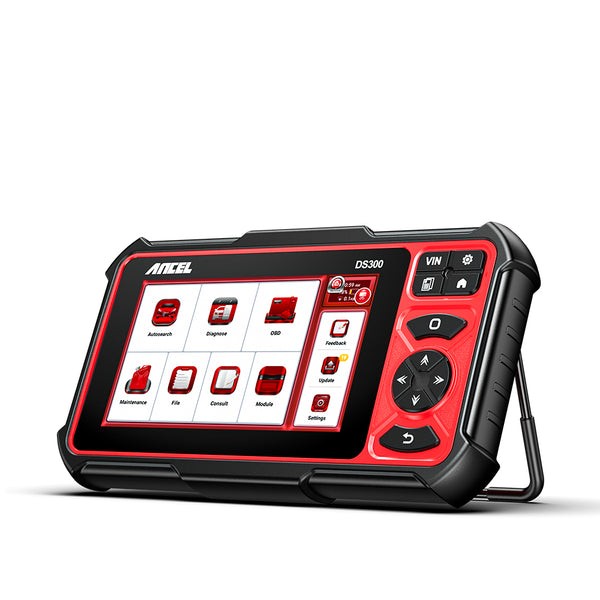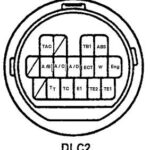Permanent OBD2 codes, also known as permanent Diagnostic Trouble Codes (DTCs), can be a persistent headache for car owners. Unlike temporary codes that may vanish after a minor issue is resolved, permanent codes are designed to stay locked in your vehicle’s Engine Control Unit (ECU) until specific conditions are met. This system is in place to ensure that significant car problems related to emissions are properly addressed and not simply masked by clearing codes without fixing the root cause.
Understanding How To Clear Permanent Obd2 Codes is crucial for maintaining your vehicle’s health, ensuring it passes emissions tests, and optimizing its performance. This in-depth guide, created by automotive repair experts at cardiagnosticnearme.com, will walk you through the necessary steps and provide you with the knowledge to tackle this task effectively.
Understanding Permanent Engine Codes
Permanent engine codes are a feature of the OBD2 system, mandated to ensure vehicles meet stringent emission standards. These codes are not designed to be easily erased; they act as a safeguard, guaranteeing that emission-related problems are genuinely fixed. The system differentiates between intermittent issues and persistent faults. While temporary codes might clear themselves if the problem resolves, permanent codes remain until the OBD2 system verifies through a series of drive cycles that the underlying issue is completely resolved.
Attempting to clear permanent codes by simply disconnecting the battery or using a basic, entry-level car scanner will typically be unsuccessful. These methods are often only capable of clearing temporary or pending codes. Therefore, a more methodical approach, often involving specific tools and procedures, is required to effectively clear permanent OBD2 codes.
Step-by-Step Guide to Clearing Permanent OBD2 Codes
Clearing permanent OBD2 codes requires a systematic approach. Here’s a detailed guide to help you through the process:
1. Diagnose and Fix the Underlying Problem
The first and most crucial step in clearing a permanent engine code is to accurately diagnose and repair the issue that triggered the code in the first place. Permanent codes are not arbitrary warnings; they are indicators of actual malfunctions that need attention.
Utilize a reliable OBD2 scanner, ideally an advanced model, to retrieve the specific DTC and understand its meaning. Resources like the ANCEL official store offer a range of scanners suitable for this purpose. Once you have the code, research its definition and potential causes. Common causes can range from faulty sensors (like oxygen sensors or mass airflow sensors) to issues within the catalytic converter or evaporative emission system.
Perform the necessary repairs or replacements based on your diagnostic findings. Ensure you are using quality replacement parts to prevent recurrence of the problem.
2. Execute a Proper Drive Cycle
After completing the repair, a drive cycle is essential. A drive cycle is a predefined set of driving conditions that your vehicle must undergo to allow its onboard computer to run self-tests and verify the effectiveness of the repair. This process allows the ECU to reassess the system and confirm whether the fault has been rectified.
The specifics of a drive cycle can vary depending on the vehicle manufacturer, make, and model. Consult your vehicle’s owner’s manual or a reputable online resource for the exact drive cycle procedure for your car. However, a general drive cycle typically includes the following stages:
- Cold Start: Begin with a cold engine. Start the engine and allow it to idle for a couple of minutes.
- Low-Speed Driving: Drive at a steady speed between 25-45 mph for approximately 5-10 minutes, ensuring smooth acceleration and deceleration. Include a few gentle stops.
- Highway Speed Cruising: Safely accelerate to highway speeds (around 55-60 mph) and maintain this speed for at least 15-20 minutes.
- Deceleration and Idle: Gradually release the accelerator and allow the vehicle to coast down to a slower speed without using the brakes excessively. Finally, idle for a few minutes.
Completing the correct drive cycle gives the ECU the opportunity to rerun diagnostics. If the repair was successful and the system passes all checks, the permanent code should clear automatically. This process might need to be repeated over several drive cycles in some cases.
3. Utilize an Advanced OBD2 Scanner for Code Clearing
If the drive cycle alone does not clear the permanent code, an advanced OBD2 scanner may be required. Basic scanners often lack the functionality to specifically clear permanent codes. You need a scanner that supports OBD2 service modes designed for handling emission-related diagnostic information, specifically Mode $04 (Clear/Reset Emissions-related Diagnostic Information) and Mode $0A (Permanent DTCs). Scanners from brands like ANCEL, available at ANCEL Car Scanner, often provide these advanced capabilities.
 ANCEL DS300 Bidirectional OBD2 All System Scan Tool
ANCEL DS300 Bidirectional OBD2 All System Scan Tool
To use an advanced scanner to clear the code:
- Connect the Scanner: Plug your OBD2 scanner into the diagnostic port of your vehicle. This port is usually located under the dashboard on the driver’s side.
- Turn Ignition ON: Turn the ignition key to the “ON” position. This powers up the car’s electronics without starting the engine.
- Access Permanent DTCs: Navigate the scanner’s menu to locate the option for reading or clearing permanent DTCs. This may be listed under “Permanent Codes,” “Mode $0A,” or similar terminology depending on the scanner’s interface.
- Clear the Code: Follow the on-screen prompts provided by your scanner to initiate the code clearing process. Some scanners may require specific steps or confirmation before clearing permanent codes. It’s possible you might need to perform another abbreviated drive cycle after using the scanner to finalize the clearing process.
4. Consider an ECU Software Update
In certain situations, a permanent code might persist due to outdated ECU software. Car manufacturers regularly release software updates to address known issues, improve vehicle performance, and fix diagnostic glitches. These updates can sometimes resolve issues that prevent permanent codes from clearing.
- Check for ECU Updates: Contact your local dealership or check the manufacturer’s website to see if there are any available software updates for your vehicle’s ECU. You will typically need to provide your Vehicle Identification Number (VIN) to check for compatibility.
- Perform the Update: ECU updates are usually performed at a dealership using specialized equipment. While some advanced DIYers might be able to perform updates with aftermarket tools and software, it’s generally recommended to have this done professionally to avoid potential complications.
Updating the ECU software can resolve software-related issues that might be hindering the code clearing process and ensure the vehicle’s diagnostic system operates correctly.
5. Perform an ECU Reset (Use with Caution)
Resetting the ECU should be considered as a last resort if all other methods have failed. This process erases all stored data in the ECU, including learned settings and adaptations, which can sometimes force the clearing of persistent codes.
- Disconnect Battery: Locate the negative terminal of your car battery. Using a wrench, carefully disconnect the negative battery cable.
- Wait and Reconnect: Allow the vehicle to sit for at least 15-20 minutes. This ensures that any residual electrical charge is fully dissipated.
- Reconnect Battery: Reconnect the negative battery cable securely.
- Drive Cycle: After reconnecting the battery, perform a complete drive cycle. This allows the ECU to relearn necessary settings and recalibrate various systems.
Caution: Resetting the ECU can have side effects. Your car may initially run rough or have reduced performance until the ECU relearns optimal settings. It’s crucial to perform a drive cycle immediately after an ECU reset. This method should only be used when other recommended steps have not been successful.
6. Consult a Professional Mechanic
If you have diligently followed all the steps outlined above and the permanent code remains stubbornly present, it is advisable to seek assistance from a qualified professional mechanic. Some permanent codes can be exceptionally difficult to clear without specialized diagnostic tools, in-depth knowledge, and hands-on expertise.
A professional mechanic can conduct a thorough diagnostic evaluation, utilizing advanced equipment and their experience to pinpoint any remaining issues and take the appropriate actions to clear the code effectively. They can also ensure that there are no underlying mechanical or electrical problems that are contributing to the persistent code.
The Importance of Clearing Permanent Engine Codes
Clearing permanent engine codes is more than just turning off a warning light on your dashboard. It’s crucial for:
- Passing Emissions Tests: Permanent codes are a primary reason vehicles fail emissions tests. Clearing these codes is essential for legal compliance and vehicle registration.
- Maintaining Fuel Efficiency: Underlying issues causing permanent codes can negatively impact your vehicle’s fuel economy. Addressing these codes can restore optimal fuel efficiency and save you money on gas.
- Preventing Further Engine Damage: Ignoring permanent codes can lead to more significant damage to your engine or related systems over time, potentially resulting in costly repairs down the road. Addressing the root cause promptly is a preventative measure against more severe problems.
Tips to Prevent Permanent Engine Codes
Prevention is always better than cure. To minimize the likelihood of encountering permanent engine codes, consider these proactive measures:
- Regular Vehicle Maintenance: Adhere to your vehicle’s recommended maintenance schedule. Regular servicing, including oil changes, filter replacements, and spark plug replacements, keeps your engine running efficiently and reduces the chance of problems that trigger codes.
- Address Issues Promptly: Don’t ignore warning lights or symptoms of vehicle malfunction. Addressing minor issues as soon as they arise can prevent them from escalating into more significant problems that trigger permanent codes.
- Use High-Quality Replacement Parts: When performing repairs, especially on emission-related components, opt for OEM (Original Equipment Manufacturer) or high-quality aftermarket parts. Inferior parts can fail prematurely or cause system incompatibilities, leading to further issues and potential permanent codes.
Final Thoughts
Dealing with permanent OBD2 codes can be challenging, but by understanding the nature of these codes and following a systematic approach, you can effectively clear them and ensure your vehicle operates optimally. Remember, clearing the code is only one part of the process; identifying and fixing the underlying issue is paramount for long-term vehicle health and performance. By combining the right knowledge, tools, and procedures, you can confidently handle permanent OBD2 codes and keep your car running smoothly and efficiently.
FAQs
Can a permanent engine code affect my car’s warranty?
Yes, a permanent engine code can potentially affect your car’s warranty, particularly if the underlying issue is due to neglect or improper maintenance. Warranty claims related to emission control systems are often scrutinized, and a permanent code might indicate a problem that is not covered under warranty if it’s deemed to be caused by owner negligence.
Can a permanent engine code cause my vehicle to go into limp mode?
Yes, certain permanent engine codes, especially those related to critical engine or transmission functions, can indeed cause your vehicle to enter limp mode (also known as reduced power mode or emergency mode). This is a safety mechanism to prevent further damage by limiting engine power and vehicle speed until the fault is addressed.
Can I clear a permanent engine code without driving the car?
Generally, clearing permanent engine codes typically requires performing a drive cycle because the OBD2 system is designed to verify the repair through operational tests conducted during driving. While some advanced scanners might offer forced clearing options, the code is likely to reappear if the underlying issue isn’t truly resolved and verified through a drive cycle. In most cases, driving the vehicle through a specific drive cycle is necessary for the system to confirm the fix and clear the permanent code.
